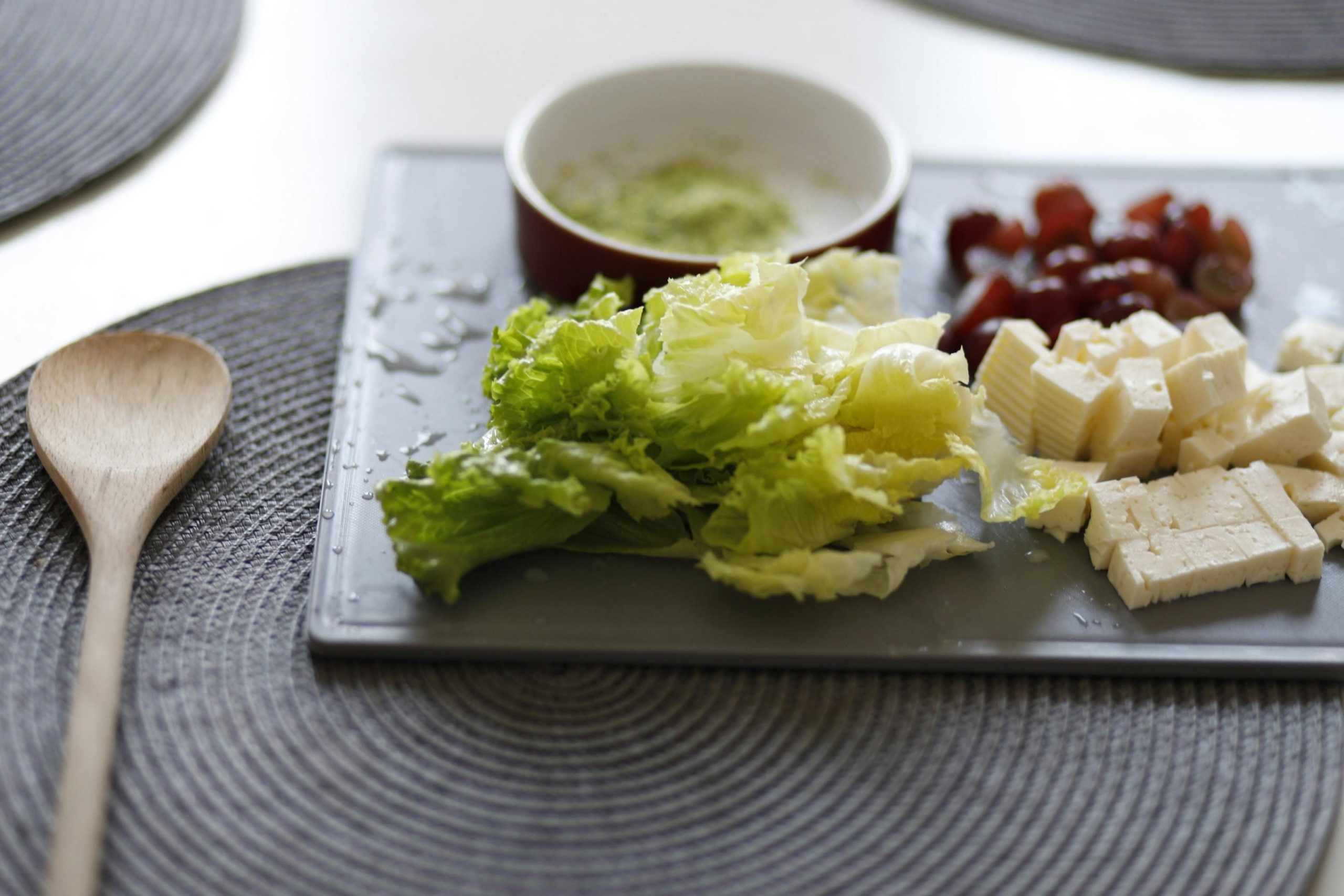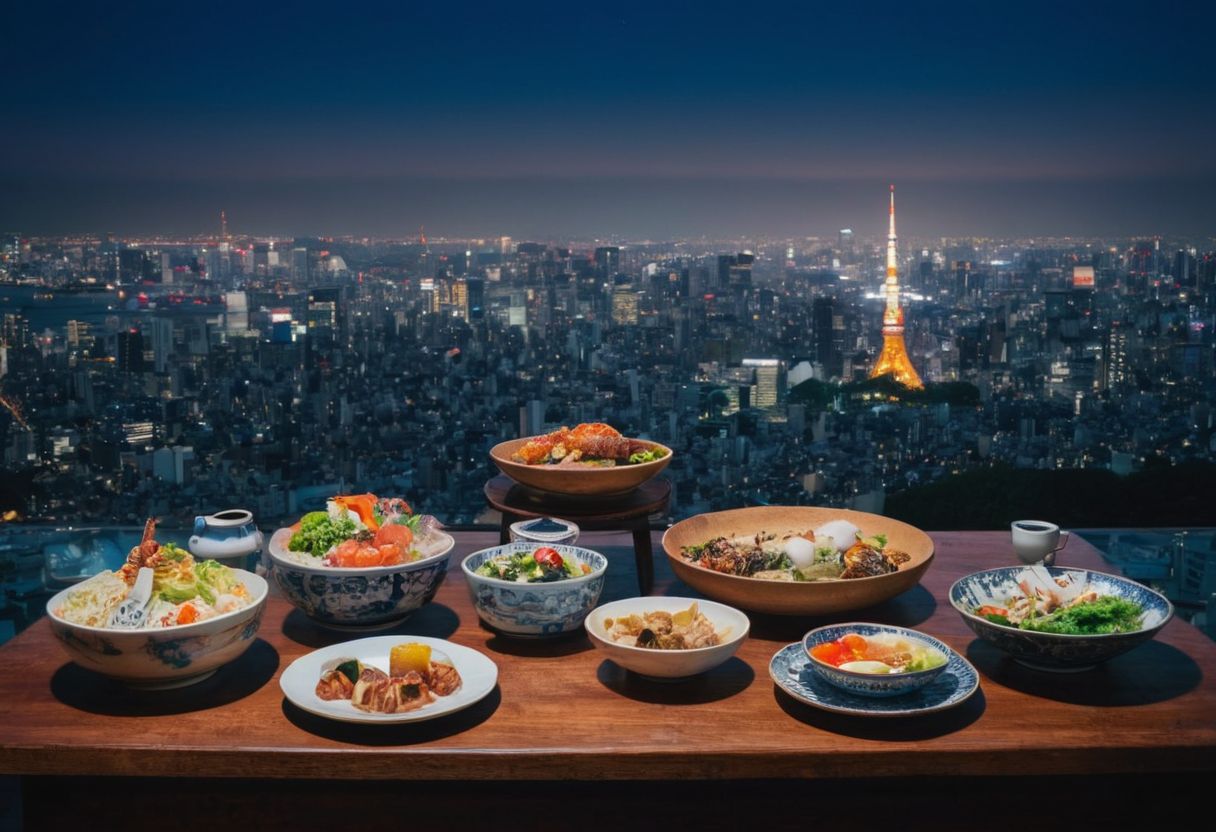Have you ever experienced the sizzle and spectacle of teppanyaki cooking up close?
Finding a dining experience that combines entertainment, skill, and exquisite flavours can be a challenge.
Teppanyaki, a style of Japanese cuisine that uses an iron griddle to cook food, offers just that.
In this article, we’ll embark on a culinary journey to explore the history, techniques, and unique dining experience of teppanyaki, uncovering what sets it apart from other cooking styles.
Understanding Teppanyaki Food: More Than Just a Meal

Teppanyaki is a fascinating culinary art that transcends the boundaries of traditional cooking, offering a unique blend of taste, performance, and cultural heritage. Unlike other Japanese cuisines that might prioritize simplicity and the inherent flavours of ingredients, teppanyaki brings the cooking process to the forefront, turning meal preparation into an engaging show. This style of cooking is characterized by the use of an iron griddle, where chefs skillfully cook and entertain, making the dining experience memorable and interactive.
What sets teppanyaki apart from other cooking methods is not just the food, but the way it’s prepared and presented. Chefs are at the heart of the teppanyaki experience, combining culinary expertise with theatrical flair to captivate diners. The interaction between chefs and guests adds a personal touch to the meal, making teppanyaki more than just dining out; it’s an immersive experience. This unique aspect has contributed to its popularity, making teppanyaki a favoured choice in Japanese restaurants and steakhouses worldwide.
The Origins of Teppanyaki: A Historical Perspective
The history of teppanyaki is as rich and layered as the dishes it produces. Originating in Japan, the term ‘teppanyaki’ combines ‘teppan’ (iron plate) and ‘yaki’ (grilled, broiled, or pan-fried), pointing to its basic cooking technique. However, the modern incarnation of teppanyaki is credited to a Japanese restaurant chain in the mid-20th century, which introduced the concept of cooking Western-influenced food on a large iron griddle in front of guests. This innovative approach not only showcased the chefs’ skill and creativity but also turned the meal into a captivating performance, distinguishing teppanyaki from traditional Japanese dishes.
The Birth of Teppanyaki: A Timeline
The birth of teppanyaki as we know it today can be traced back to 1945, with the opening of the first teppanyaki-style restaurant in Kobe, Japan. This establishment marked the beginning of teppanyaki’s journey from a novel dining concept to a global phenomenon. The style quickly gained traction among foreign tourists before making its way to the United States in the early 1960s, where it was popularized as a form of Japanese steakhouse. The evolution of teppanyaki over the years reflects a blend of Japanese culinary traditions with global influences, making it a symbol of cultural exchange and innovation in the culinary world.
The Art of Teppanyaki Cooking: Techniques and Tools
The art of teppanyaki cooking is a spectacle of culinary skill and precision, where the iron griddle, or ‘teppan’, plays a central role. This cooking style, unique to Japanese cuisine, involves an array of techniques such as grilling, frying, and sautéing directly on a hot plate. The teppanyaki chef employs tools like spatulas, tongs, and knives with remarkable dexterity, turning simple ingredients into a feast for both the eyes and the palate.
Essential to mastering teppanyaki are the techniques that bring out the flavors of high-quality ingredients. These include:
- Light seasoning to enhance natural flavors without overpowering them.
- Precise temperature control to ensure each ingredient is cooked to perfection.
- Incorporating entertaining elements like the famous onion volcanoes, which add a theatrical dimension to the dining experience. Through these methods, teppanyaki chefs create dishes that are as delightful to watch being prepared as they are to eat.
The Teppanyaki Chef: Culinary Artist and Entertainer
The teppanyaki chef is not just a cook but a performer, who combines culinary expertise with engaging showmanship. Armed with a griddle, spatula, and knife, they craft dishes before diners’ eyes, flipping prawns and creating onion volcanoes, all while interacting with guests. This blend of cooking and entertainment requires chefs to be skilled in both food preparation and customer engagement, making them the stars of the teppanyaki dining experience.
Mastering Teppanyaki: Tips and Tricks
For those eager to dive into the world of teppanyaki, mastering a few key tips can enhance the experience, whether you’re cooking at home or dining out. First, understanding the grill’s hot spots is crucial for cooking ingredients evenly and to perfection. Knowing where and how to place different foods on the teppan allows for better control over the cooking process.
Additionally, mastering the art of teppanyaki at home involves:
- Experimenting with various ingredients to explore different flavors and textures.
- Practicing knife and spatula skills to add flair to the cooking process. With patience and practice, anyone can enjoy creating teppanyaki dishes that impress both in taste and presentation, bringing a piece of the teppanyaki experience into their own kitchen.
Essential Ingredients for Authentic Teppanyaki

Teppanyaki cooking is all about the harmony of flavours, achieved through the use of high-quality ingredients. Central to this culinary art are proteins like kobe beef, known for its marbling and tenderness, and a variety of seafood including shrimp, scallops, and lobsters. These ingredients not only bring a rich flavour to the table but also allow for a visually striking presentation, essential in teppanyaki’s performance art.
Besides the proteins, vegetables play a pivotal role in creating a balanced teppanyaki dish. Staples include bean sprouts, shiitake mushrooms, and zucchini, which are favoured for their textures and ability to absorb flavours like soy sauce, enhancing the overall taste. The inclusion of rice or noodles as a base or side complements the meats and vegetables, rounding off the meal with a satisfying finish.
Best Foods for Teppanyaki: A Guide
When it comes to teppanyaki, the best foods are those that cook well on a flat griddle and can absorb the flavours of simple seasonings like soy sauce. Seafood, particularly scallops and lobsters, is a favourite for its quick cooking time and ability to take on a delightful char. Meats, especially kobe beef, are chosen for their quality and flavour. Vegetables like bean sprouts and mung bean sprouts add crunch and freshness, while rice and noodles serve as the perfect base to soak up all the delicious juices.
The Teppanyaki Dining Experience: Interactive and Engaging

The teppanyaki dining experience is truly one-of-a-kind, blending the art of cooking with interactive entertainment. Diners are not just passive observers but active participants in a culinary show that unfolds right before their eyes. The communal setting of teppanyaki tables fosters a unique atmosphere where guests can:
- Engage in lively conversations
- Share in the excitement of watching their meals being expertly prepared
- Interact directly with the chefs, adding a personal touch to the dining experience. This interactive and communal aspect of teppanyaki dining sets it apart from traditional restaurant experiences, making each meal memorable and unique.
The essence of teppanyaki dining lies in its ability to bring people together, creating a convivial atmosphere that is perfect for celebrations, gatherings, or simply enjoying a night out with friends and family. The chefs play a crucial role in this experience, using their culinary skills to entertain and engage diners, while simultaneously preparing delicious meals. Highlights of the teppanyaki show may include:
- Impressive knife skills and culinary theatrics
- The creation of iconic dishes such as the flaming onion volcano
- Personalised interactions that cater to the diners’ preferences. Through these elements, teppanyaki dining transcends the mere act of eating, offering an immersive and engaging experience that delights all the senses.
Teppanyaki vs. Other Cooking Styles: What Sets It Apart
Teppanyaki distinguishes itself from other cooking styles through its unique combination of entertainment, skill, and culinary excellence. Unlike traditional cooking methods that focus solely on the preparation of meals, teppanyaki turns the cooking process into an interactive spectacle. This style involves chefs performing culinary feats right before diners’ eyes, such as flipping shrimp tails and crafting onion volcanoes, making the dining experience as much about the performance as it is about the food.
Furthermore, teppanyaki’s appeal lies in its use of high-quality ingredients and the ability of the iron griddle to enhance flavours through precise temperature control. Key features that set it apart include:
- The interactive and communal dining setup
- The chefs’ role as both cooks and entertainers
- Light seasoning to highlight the natural flavours of the ingredients. These aspects contribute to teppanyaki’s popularity, offering a dining experience that is not only delicious but also memorably engaging.
Elevate Your Teppanyaki Journey with INDULGE
Elevating your teppanyaki journey involves more than just visiting any restaurant; it’s about immersing yourself in a culinary adventure that tantalises your taste buds and enriches your knowledge. INDULGE offers exclusive culinary tours and experiences in Zurich that do just that. By participating in these tours, you’re not only indulging in delicious teppanyaki dishes but also gaining insights into the artistry and history behind this fascinating cooking style. It’s a unique opportunity to see how teppanyaki fits into Zurich’s vibrant food scene and to appreciate the skill and creativity of the chefs.
These experiences with INDULGE are designed to deepen your understanding of teppanyaki in an engaging and enjoyable way. Highlights include:
- Exclusive Wine & Dine experiences, where teppanyaki is paired with exquisite wines, elevating the dining experience.
- Guided food tours led by culinary experts, providing a behind-the-scenes look at Zurich’s teppanyaki offerings.
- An introduction to Swiss specialties, offering a contrast and comparison to the traditional Japanese teppanyaki, enriching your culinary journey. Whether you’re a seasoned foodie or new to the world of teppanyaki, INDULGE’s curated tours and experiences promise to make your exploration of this Japanese art form both memorable and delightful.
Frequently Asked Questions
What type of food is teppanyaki?
Teppanyaki is a style of Japanese cuisine that involves cooking food on an iron griddle. It is characterized by a unique blend of taste, performance, and cultural heritage, where the cooking process is turned into an engaging show. High-quality ingredients such as kobe beef, seafood, vegetables, rice, or noodles are commonly used, making teppanyaki a delightful culinary experience.
Is teppanyaki Chinese or Japanese?
Teppanyaki is a style of Japanese cuisine. It originated in Japan and is known for its unique cooking method using an iron griddle. The term ‘teppanyaki’ combines ‘teppan’ (iron plate) and ‘yaki’ (grilled, broiled, or pan-fried), highlighting its Japanese roots.
What happens during teppanyaki?
During teppanyaki, diners experience an interactive and engaging culinary show right before their eyes. Chefs perform culinary feats on an iron griddle, such as flipping shrimp tails and crafting onion volcanoes, while simultaneously preparing the meal. This communal and interactive dining experience allows guests to engage in lively conversations, share in the excitement of watching their meals being expertly prepared, and interact directly with the chefs, making each meal memorable and unique.








